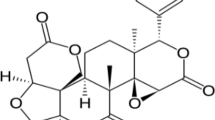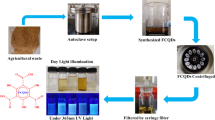Abstract
The employing of organophosphorus pesticides (OPs), especially, the abusing of OPs, leads to residue accumulation, which causes immense effect to human health and environment. So, it is an urgent task to develop highly sensitive OPs’ detection platforms. A novel enzyme modulated fluorescence-on sensor for sensitive detection of omethoate was successfully constructed, using AT-rich double-stranded DNA (dsDNA) templated copper nanoparticles (CuNPs) as the fluorescent signal and covalently combined magnetic Fe3O4 and graphene oxide (GO) as the single-stranded DNA (ssDNA) adsorbent. The assay just associates acetylcholinesterase (AChE), one strand of dsDNA, acetylcholinein (ATCh), Fe3O4@GO and ascorbic acid (AA)/Cu2+. T6-1 and T6-2 are two strands single-stranded DNA (ssDNA) with the AT-rich sequence and continuous T bases at their two ends, respectively. In the aid of Hg2+, they can hybridize into a blunt-ended dsDNA with one AT-rich end and one T-Hg2+-T base pairs end. Once omethoate exists, it can inhibit AChE from transducing acetylcholinein (ATCh) into thiocholine (TCh). So, no TCh can snatch Hg2+ from T-Hg2+-T base pairs in blunt-ended T6-1/T6-2. T6-1/T6-2 still keeps its integrity in blunt-ended dsDNA configuration, and hence the subsequently added Fe3O4@GO cannot absorb it. The remained blunt-ended T6-1/T6-2 in supernatant can act as the template of CuNPs to produce strong luminescence. The developed detection offers a signal-on omethoate detection, which can sensitively detect omethoate in the linear range of 5–200 nmol/L with a detection limit of 2.48 nmol/L. More importantly, it can detect omethoate in food and environmental samples, demonstrating high potential in real sample detection.






Similar content being viewed by others
References
Richins RD, Kaneva I, Mulchandani A, Chen W. Biodegradation of organophosphorus pesticides by surface-expressed organophosphorus hydrolase. Nat Biotechnol. 1997;15:984–7.
Pavlic M, Haidekker A, Grubwieser P, Rabl W. Fatal intoxication with omethoate. J Leg Med. 2002;116:238–41.
Dolara P, Salvadori M, Capobianco T, Torricelli F. Sister-chromatid exchanges in human lymphocytes induced by dimethoate, omethoate, deltamethrin, benomyl and their mixture. Mutat Res. 1992;283:113.
Guerrini L, Sanchez-Cortes S, Cruz VL, Martinez S, Ristori S, Feis A. Surface-enhanced Raman spectra of dimethoate and omethoate. J Raman Spectrosc. 2010;42:980–5.
John H, Eddleston M, Clutton RE, Worek F, Thiermann H. Simultaneous quantification of the organophosphorus pesticides dimethoate and omethoate in porcine plasma and urine by LC-ESI-MS/MS and flow-injection-ESI-MS/MS. J Chromatogr B. 2010;878:1234–45.
Montesano MA, Olsson AO, Kuklenyik P, Needham LL, Bradman A, Barr DB. Method for determination of acephate, methamidophos, omethoate, dimethoate, ethylenethiourea and propylenethiourea in human urine using high-performance liquid chromatography-atmospheric pressure chemical ionization tandem mass spectrometry. J Exposure Sci Environ Epidemiol. 2007;17:321–30.
Tang T, Deng J, Zhang M, Shi G, Zhou T. Quantum dot-DNA aptamer conjugates coupled with capillary electrophoresis: a universal strategy for ratiometric detection of organophosphorus pesticides. Talanta. 2016;146:55–61.
Sultatos LG. Mammalian toxicology of organophosphorus pesticides. J Toxicol Environ Health. 1994;43:271–89.
Zheng Z, Zhou Y, Li X, Liu S, Tang Z. Highly-sensitive organophosphorous pesticide biosensors based on nanostructured films of acetylcholinesterase and CdTe quantum dots. Biosens Bioelectron. 2011;26:3081–5.
Lu L, Su H, Liu Q, Li F. Development of a luminescent dinuclear Ir(III) complex for ultrasensitive determination of pesticides. Anal Chem. 2018;90:11716–22.
Pundir CS, Chauhan N. Acetylcholinesterase inhibition-based biosensors for pesticide determination: a review. Anal Biochem. 2012;429:19–31.
Miao Y, He N, Zhu JJ. History and new developments of assays for cholinesterase activity and inhibition. Chem Rev. 2010;110:5216–34.
Chen H, Wu Y, Yang W, Zhan S, Qiu S, Zhou P. Ultrasensitive and selective detection of isocarbophos pesticide based on target and random ssDNA triggered aggregation of hemin in polar organic solutions. Sens Actuators B Chem. 2017;243:445–53.
Ferri D, Gaviña P, Costero AM, Parra M, Vivancos J-L, Martínez-Máñez R. Detection and discrimination of organophosphorus pesticides in water by using a colorimetric probe array. Sens Actuators B Chem. 2014;202:727–31.
Qian S, Lin H. Colorimetric sensor array for detection and identification of organophosphorus and carbamate pesticides. Anal Chem. 2015;87:5395–400.
Yan X, Li H, Han X, Su X. A ratiometric fluorescent quantum dots based biosensor for organophosphorus pesticides detection by inner-filter effect. Biosens Bioelectron. 2015;74:277–83.
Wu X, Song Y, Yan X, Zhu C, Ma Y, Du D, Lin Y. Carbon quantum dots as fluorescence resonance energy transfer sensors for organophosphate pesticides determination. Biosens Bioelectron. 2017;94:292–7.
Nsibande SA, Forbes PBC. Fluorescence detection of pesticides using quantum dot materials—a review. Anal Chim Acta. 2016;945:9–22.
Xu J, Yu C, Feng T, Liu M, Li F, Wang Y, Xu J. N-Carbamoylmaleimide-treated carbon dots: stabilizing the electrochemical intermediate and extending it for the ultrasensitive detection of organophosphate pesticides. Nanoscale. 2018;10:19390–8.
Huang S, Guo M, Tan J, Geng Y, Wu J, Tang Y, Su C, Lin CC, Liang Y. Novel fluorescence sensor based on all-inorganic perovskite quantum dots coated with molecularly imprinted polymers for highly selective and sensitive detection of omethoate. ACS Appl Mater Interfaces. 2018;10:39056–63.
Liao H, Zhou Y, Chai Y, Yuan R. An ultrasensitive electrochemiluminescence biosensor for detection of microRNA by in-situ electrochemically generated copper nanoclusters as luminophore and TiO2 as coreaction accelerator. Biosens Bioelectron. 2018;114:10–4.
Borghei YS, Hosseini M, Ganjali MR, Hosseinkhani S. Label-free fluorescent detection of microRNA-155 based on synthesis of hairpin DNA-templated copper nanoclusters by etching (top-down approach). Sens Actuators B Chem. 2017;248:133–9.
Borghei YS, Hosseini M, Ganjali MR. Visual detection of miRNA using peroxidase-like catalytic activity of DNA-CuNCs and methylene blue as indicator. Clin Chim Acta. 2018;483:119–25.
Ma H, Xu Z, Fang H, Lei X. Unexpected sequence adsorption features of polynucleotide ssDNA on graphene oxide. Phys Chem Chem Phys. 2020;22:11740–6.
Ganesan V, Louis C, Damodaran SP. Graphene oxide-mesoporous iron oxide nanohybrid: an efficient reusable nanoadsorbent for the removal of organic dyes from wastewater. Mater Res Express. 2019;6:2840–4.
Baghayeri M, Alinezhad H, Fayazi M, Tarahomi M, Ghanei-Motlagh R, Maleki B. A novel electrochemical sensor based on a glassy carbon electrode modified with dendrimer functionalized magnetic graphene oxide for simultaneous determination of trace Pb(II) and Cd(II). Electrochim Acta. 2019;312:80–8.
Sharafeldin M, Bishop GW, Bhakta S, El-Sawy A, Suib SL, Rusling JF. Fe3O4 nanoparticles on graphene oxide sheets for isolation and ultrasensitive amperometric detection of cancer biomarker proteins. Biosens Bioelectron. 2016;91:359–66.
Yakout AA, Albishri HM. Solvo-thermal synthesis, characterization of aluminon-functionalized magnetic nanoparticles and investigation of its adsorption performance for Cr(VI) and Cr(III). J Taiwan Inst Chem Eng. 2015;55:180–8.
Shemirani F, Alvand M. Fabrication of Fe3O4@graphene oxide core-shell nanospheres for ferrofluid-based dispersive solid phase extraction as exemplified for Cd(II) as a model analyte. Microchim Acta. 2016;183:1749–57.
Rehman GU, Ismail AF, Goh PS, Rezaei-Dasht Arzhandi M, Ismail N. Aptes and teos modified binary recyclable hybrid Fe3O4@GO nanocomposite for photocatalytic dye removal. J Teknol. 2018;80:157–64.
Calatayud MP, Riggio C, Raffa V, Sanz B, Goya GF. Neuronal cells loaded with PEI-coated Fe3O4 nanoparticles for magnetically guided nerve regeneration. J Mater Chem. 2013;1:3607–16.
Zhu X, Zhang B, Ye Z, Shi H, Shen Y, Li G. An ATP-responsive smart gate fabricated with a graphene oxide-aptamer-nanochannel architecture. Chem Commun. 2014;51:640–3.
Liu Z, Wang J, Xie D, Chen G. Polyaniline-coated Fe3O4 nanoparticle-carbon-nanotube composite and its application in electrochemical biosensing. Small. 2010;4:462–6.
Lian Y, Chen J, Zhen L, Xu W, Ye D. Degradation of phenol using Fe3O4-GO nanocomposite as a heterogeneous photo-Fenton catalyst. Sep Purif Technol. 2016;16:171.
Zhang H, Li S, Liu Y, Yu Y, Lin S, Wang Q, Miao L, Wei H, Sun W. Fe3O4@GO magnetic nanocomposites protect mesenchymal stem cells and promote osteogenic differentiation of rat bone marrow mesenchymal stem cells. Biomater Sci. 2020;8:5984–93.
Huang B, Liu Y, Li B, Liu S, Zeng G, Zeng Z, Wang X, Ning Q, Zheng B, Yang C. Effect of Cu(II) ions on the enhancement of tetracycline adsorption by Fe3O4@SiO2—chitosan/graphene oxide nanocomposite. Carbohydr Polym. 2016;157:576–85.
Zhu C, Zhai J, Dan W, Dong S. Graphene oxide/polypyrrole nanocomposites: one-step electrochemical doping, coating and synergistic effect for energy storage. J Mater Chem. 2012;22:6300–6.
Dou X, Chu X, Kong W, Luo J, Yang M. A gold-based nanobeacon probe for fluorescence sensing of organophosphorus pesticides. Anal Chim Acta. 2015;891:291–7.
Zhang C, Wang L, Tu Z, Sun X, He Q, Lei Z, Xu C, Liu Y, Zhang X, Yang J. Organophosphorus pesticides detection using broad-specific single-stranded DNA based fluorescence polarization aptamer assay. Biosens Bioelectron. 2014;55:216–9.
Zhao Y, Wang Y, Yang R, Zhang H, Lu L. A zero-background fluorescent aptasensor for ultrasensitive detection of pesticides based on magnetic three-dimensional DNA walker and poly(T)—templated copper nanoparticles. Sens Actuators B Chem. 2021;343:130172.
Acknowledgements
This work was funded by the National Natural Science Foundation of China (21705089), the Natural Science Foundation of Shandong Province (ZR2017MB064) and the Research Foundation for Distinguished Scholars of Qingdao Agricultural University (663-1116010).
Author information
Authors and Affiliations
Corresponding author
Ethics declarations
Declaration of interests
The authors declare that they have no known competing financial interests or personal relationships that could have appeared to influence the work reported in this paper.
Supplementary Information
Below is the link to the electronic supplementary material.
About this article
Cite this article
Zhang, H., Kang, WK., Wang, Y. et al. An Enzymatic Reaction Modulated Fluorescence-on Omethoate Biosensor Based on Fe3O4@GO and Copper Nanoparticles. J. Anal. Test. 6, 3–11 (2022). https://doi.org/10.1007/s41664-022-00210-6
Received:
Accepted:
Published:
Issue Date:
DOI: https://doi.org/10.1007/s41664-022-00210-6




